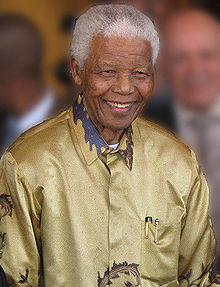A Six-Year Push to Attack Iran
While Iran was named a part of President George W. Bush’s “axis of evil” in 2002, efforts to ignite a confrontation with Iran date back long before the post-9/11 war on terror. Presently, the Administration is trumpeting claims that Iran is closer to a nuclear weapon than the CIA’s own analysis shows and positing Iranian influence in Iraq’s insurgency, but efforts to destabilize Iran have been conducted covertly for years, often using members of Congress or non-government actors in a way reminiscent of the 1980s Iran-Contra scandal.
The motivations for an Iran strike were laid out as far back as 1992. In classified defense planning guidance – written for then-Secretary of Defense Dick Cheney by then-Pentagon staffers I. Lewis "Scooter" Libby, World Bank Chief Paul Wolfowitz, and ambassador-nominee to the United Nations Zalmay Khalilzad – Cheney’s aides called for the United States to assume the position of lone superpower and act preemptively to prevent the emergence of even regional competitors. The draft document was leaked to the New York Times and the Washington Post and caused an uproar among Democrats and many in George H. W. Bush’s Administration.
In September 2000, the Project for the New American Century (PNAC) issued a report titled “Rebuilding America's Defenses,” which espoused similar positions to the 1992 draft and became the basis for the Bush-Cheney Administration's foreign policy. Libby and Wolfowitz were among the participants in this new report; Cheney, former Defense Secretary Donald Rumsfeld and other prominent figures in the Bush administration were PNAC members.
“The United States has for decades sought to play a more permanent role in Gulf regional security,” the report read. “While the unresolved conflict with Iraq provides the immediate justification, the need for a substantial American force presence in the Gulf transcends the issue of the regime of Saddam Hussein. . . . We cannot allow North Korea, Iran, Iraq or similar states to undermine American leadership, intimidate American allies or threaten the American homeland itself.”
This approach became official US military policy during the current Bush Administration. It was starkly on display yesterday when Undersecretary of State for Political Affairs Nicholas Burns noted a second aircraft carrier strike force headed for the Persian Gulf, saying, "The Middle East isn't a region to be dominated by Iran. The Gulf isn't a body of water to be controlled by Iran. That's why we've seen the United States station two carrier battle groups in the region." Read the investigation @
sfux - 21. Feb, 08:28 Article 4017x read
















































